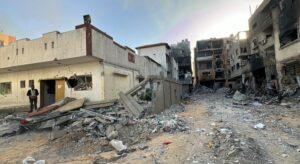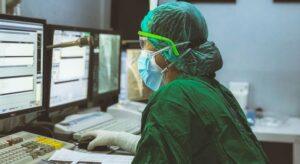The findings, based on data from nearly 280,000 young people aged 11, 13 and 15 in 44 countries, highlight a growing crisis in adolescent well-being, with economically disadvantaged girls and adolescents bearing the brunt affected.
“Today’s adolescents face unprecedented challenges in their social environments“, said Dr Hans Kluge, WHO regional director for Europe, “with potentially long-term consequences on their health and future life prospects.”
“These results should be a a wake-up call for us all to act now improve the conditions in which our young people grow up,” he stressed.
Decline in family and peer support
Support from family and peers is an essential pillar of adolescent mental health and overall development. Yet the report shows a worrying decline in both areas.
Between 2021 and 2022, only 68 percent of teens reported feeling supported by their family, compared to 73 percent in 2018.
The decline was even steeper for girls, with only 64 percent feeling strong family support, compared to 72 percent in 2018.
Likewise, peer support fell by 3 percent. This decrease was particularly pronounced among older adolescents, who are already more vulnerable to mental health problems.
Additionally, the report shows that socioeconomic status continues to play a significant role in shaping teens’ experiences, with a 9% disparity between low-income teens and those from wealthier households.
The disparity extends to peer relationships, with people from disadvantaged backgrounds also less likely to feel supported by their friends or classmates.
Anxiety in class
Academic pressure is intensifying, with significant consequences for the mental health of adolescents.
Two-thirds of 15-year-old girls reported feeling overwhelmed by their homework during the study period, a sharp increase from 54% in 2018. Boys also reported increased pressure, but at lower rates .
Dr Irene García-Moya, one of the authors of the report, said: “The increasing pressure on adolescents is a multi-faceted problem. Girls are often caught between competing expectations for academic excellence and their traditional social roles, while boys may face pressure to appear strong and independent.discouraging them from seeking the necessary support.
The report also reveals that girls are less likely to feel supported by their teachers.
“These findings highlight a critical and growing gap in support structures for adolescent girls, who not only face greater school-related pressures, but also experience less support from family and of their teachers than boys,” warned Dr Natasha Azzopardi-Muscat, WHO director. National health policies and systems for Europe.
“This is not the first time that our HBSC studies have highlighted different impacts on the health of boys and girls,” she added. emphasizing the need to carefully consider the gender dimension of the issue.
Recommendations for action
“Our results clearly indicate that no sector or industry can meet these challenges alone,said WHO regional director Kluge, emphasizing that the report calls for urgent coordinated efforts.
“Building safer and more inclusive school environments, providing economic support where it is needed, and implementing gender-sensitive interventions all require the involvement of different spheres, from education to health to public policies,” he added.
Key recommendations include strengthening family support through the creation of targeted policy interventions for families, such as parenting programs and financial assistance for low-income households.
It is also crucial to reduce academic pressure. The authors advocate for more balanced homework policies in schools, reducing class sizes and integrating mental health support into the school curriculum.
Additionally, it is essential to address disparities through inclusive social policies and programs that prioritize marginalized communities.
Dr. Kluge emphasized the importance of including adolescents at every stage of the policy-making process. He noted that “this is a key function of the WHO/Europe flagship Youth4Health initiative, ensure that young people have much more say in decisions that impact their lives.”




